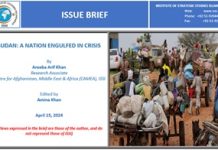As Iran marked the 10th anniversary of the Stuxnet,[1] its nuclear facilities were again hit by a large number of cyber attacks which Behrouz Kamalvandi, Spokesperson of the Atomic Energy Organization of Iran (AEOI) also confirmed.[2] However, these attacks did not cause any substantial damage as Iran blocked them on time. With increasing technological development and digitalization in the last decade, the number of cyberattacks against critical infrastructure has increased in the Middle East. The escalating cyberwarfare will breed further instability in the crisis ridden region.
What makes cyberwarfare in the Middle East more dangerous and distinct from the rest of the world is the sophistication and exclusivity of cyberattacks. Stuxnet was designed to infect the computer systems connected to the specific “programmable logic controllers (PLCs)” at Iran`s Natanz uranium enrichment facility. Stuxnet targeted specific models of PLCs which were exclusively manufactured by Siemens. In addition to 30,000 computers, 1000 centrifuges at the Natanz uranium enrichment facility were damaged.[3] The core objective was to deter Iran from achieving the nuclear weapon capability by inflicting irreversible damage to Iranian nuclear program via cyber-weapon. Wiper was another dangerous malware that hit the computer systems of the National Iranian Oil Company and Iranian Oil Ministry in April 2012. Wiper was designed to completely and systematically destroy the data stored in the hard drive of the infected computer system. Afterwards, Wiper also erased system files causing the entire computer system to crash without leaving any mark of infection behind.[4] Wiper is a sophisticated and unique cyber weapon which led to three fascinating developments in the Middle East.















